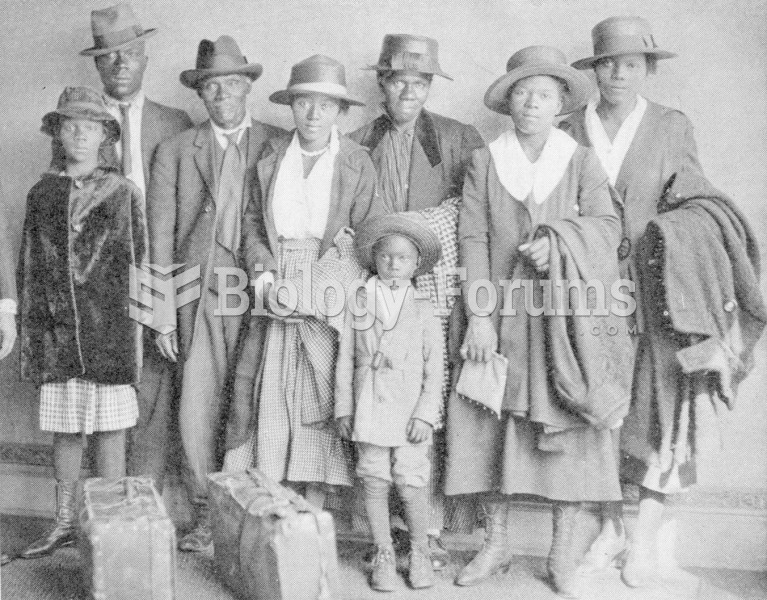|
|
|
The familiar sounds of your heart are made by the heart's valves as they open and close.
The immune system needs 9.5 hours of sleep in total darkness to recharge completely.
Illness; diuretics; laxative abuse; hot weather; exercise; sweating; caffeine; alcoholic beverages; starvation diets; inadequate carbohydrate consumption; and diets high in protein, salt, or fiber can cause people to become dehydrated.
The first-known contraceptive was crocodile dung, used in Egypt in 2000 BC. Condoms were also reportedly used, made of animal bladders or intestines.
Despite claims by manufacturers, the supplement known as Ginkgo biloba was shown in a study of more than 3,000 participants to be ineffective in reducing development of dementia and Alzheimer’s disease in older people.
 A family of African Americans arrive in Chicago, migrants from the American South, in an exodus that
A family of African Americans arrive in Chicago, migrants from the American South, in an exodus that
 Taye Diggs and Idina Menzel are an example of the most common pattern of marriages between African ...
Taye Diggs and Idina Menzel are an example of the most common pattern of marriages between African ...




